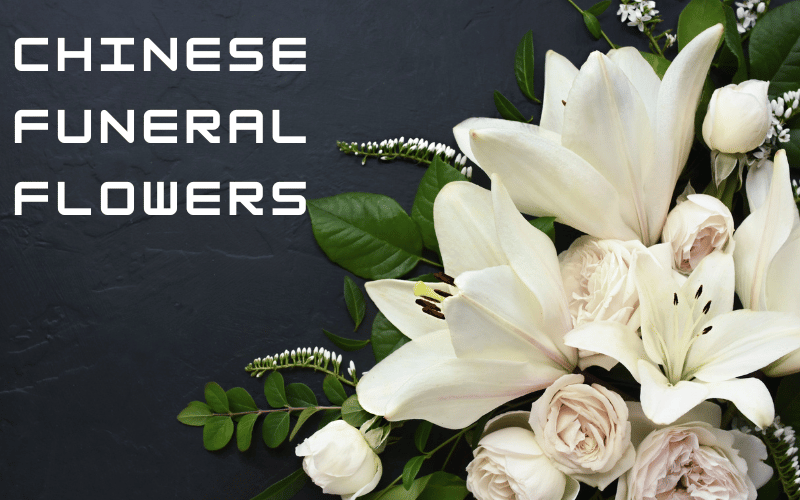(Chinese Funeral Flowers) Funeral rites have a significant significance in the rich fabric of Chinese culture, and flowers play an important part in expressing grief, respect, and love. This examination dives into the symbolism and cultural complexities involved with Chinese funeral flowers, revealing the deep meaning underlying their selection and presentation during times of sadness.

Historical Significance of Flowers in Chinese Culture:
In China, flowers have special meanings and go way back in time, especially when it comes to funerals. This tradition is connected to the beliefs of Confucianism and Taoism. Flowers are like messengers that can express emotions when words can’t, providing comfort to families going through a tough time.

Symbolic Meanings of Common Chinese Funeral Flowers:
Chrysanthemum: Chrysanthemums are commonly used in funerals to represent dignity and honor. They are connected with a well-lived life and are frequently chosen to pay tribute to the deceased.
White Lilies: White lilies in Chinese tradition symbolize that the soul of the departed has found innocence again and holds the promise of a new beginning in the afterlife.
Orchids: Orchids, which represent love, beauty, and strength, are chosen to show everlasting love and appreciation for the departed.

Color Symbolism in Chinese Funeral Flowers:
Colors are extremely important in Chinese culture, and this extends to funeral flowers:
White: Often used in funeral arrangements to represent purity and grief.
Yellow: Represents sadness and deep devotion, expressing heartfelt respect for the deceased.
Red: Although red flowers are commonly linked with excitement, they can also be used to represent love and respect in funeral situations.

Arrangement Styles and Etiquette:
Wreaths: The shape of a circle represents eternity and the cyclical nature of life and death.
Standing Sprays: When you see flower arrangements on easels at Chinese funerals, it means they want to give them a special and dignified place.
Basket Arrangements: Combining various flowers and colors to represent the various parts of life.

Funeral Flower Etiquette in Chinese Culture:
Even Numbers: Even numbers are usually linked to joy and celebration. However, odd numbers are preferable at funerals because they represent yin, which is associated with death.
Avoid Certain Colors: At Chinese funerals, they usually don’t use bright and colorful flowers. Instead, they prefer more calm colors like white, yellow, and softer tones.
Casket Flowers: Flowers are commonly placed on the casket to demonstrate love and respect for the deceased.

Contemporary Trends and Innovations:
Personalized Tributes: Nowadays, at funerals, the flowers they use often have personal touches, like adding pictures. This is done to show the unique qualities of the person who passed away
Digital Tributes: In the modern age, online platforms and virtual funerals may include digital representations of flowers, allowing friends and family from all over the world to join in the mourning process.

Cultural Variations Across Regions:
Northern China: White and yellow flowers are often preferred.
Southern China: Red and yellow flowers are commonly chosen.
Tibetan Culture: Sky burials, for example, include leaving the deceased’s body for vultures and may not necessarily involve the use of flowers.

Impact of Religion on Funeral Flowers:
Buddhism: Religious beliefs often shape how funerals are done, especially in terms of flowers. For instance, some religions prefer keeping things simple and humble when it comes to floral arrangements.
Taoism: Some traditions, like Taoism, really like to keep things in tune with nature. This means they choose flowers that are in season and can be found locally.

Chinese Flower Wreath for Chinese Funerals
Conclusion: Symbolic Elegance: A Deep Dive into Chinese Funeral Flowers
In Chinese funerals, flowers aren’t just there to look nice—they say a lot about the culture, feelings, and beliefs. The flowers they pick and how they arrange them are like a connection between the world we live in and the spiritual world. It’s a way to comfort those who are sad and to show respect to the person who has passed away. Knowing the meaning behind these flowers gives us a peek into a culture that cares about keeping traditions alive while especially honoring each person.
